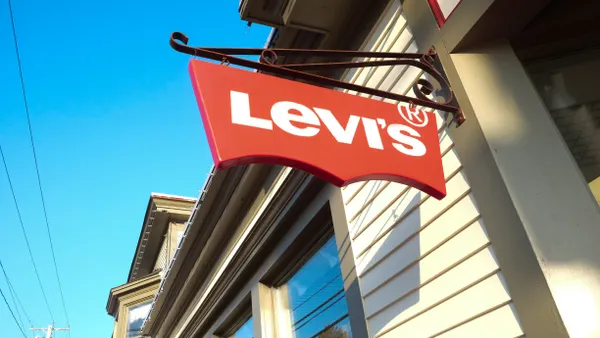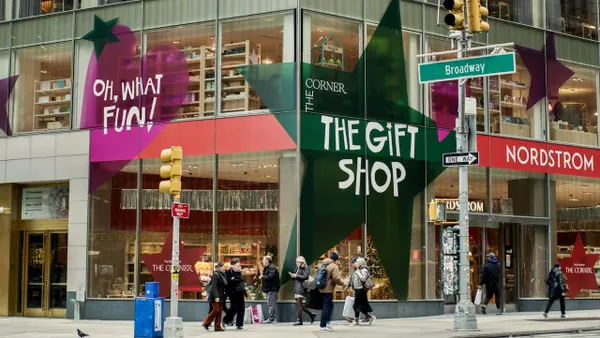What was once a straightforward trip to the store has evolved into a complex journey where purchase decisions are driven by trust and perceived value. Consumers now move fluidly between streaming content, social media, product research, and retail touchpoints—expecting a coherent brand story at every turn.
Consider the typical path: A consumer spots shampoo on a bathroom counter during a Prime Video series, encounters it while scrolling social media, sees a relevant display ad while reading hair care trends on a beauty site, explores influencer reviews, and finally notices it while browsing the shelves at their local store. This is where entertainment and shopping converge—creating multiple opportunities for meaningful brand connections.
Yet many brands still operate with fragmented messaging and disconnected touchpoints, creating a stark gap between how consumers shop and how brands advertise. This misalignment represents a significant opportunity to rethink consumer connections across the entire shopping journey.
The evolving path to purchase
Today's shopping decisions happen quickly, yet unfold across multiple touchpoints. In a recent study, Amazon Ads and GWI surveyed 2,850 US consumers between August and September 2025 across CPG categories, finding that the vast majority make their purchase within one week of determining they need a product. This compressed timeline, however, doesn't tell the full story.
Brand preferences develop long before the moment of purchase, influenced by recommendations, previous brand encounters, and advertising. While more than half of shoppers arrive at the store with a brand in mind, many remain open to alternatives. This is particularly true in categories like baby care and fragrance, where 16% and 14% of shoppers, respectively, switch brands at the point of purchase.[1] This flexibility in decision-making shows how established preferences can shift when consumers encounter compelling value.
Altogether, these dynamic shopping behaviors demand a full-funnel marketing approach that connects experiences across the entire buying journey.
How uncertainty reshapes the value equation
Value has always been important to consumers, but its significance has intensified in today's landscape. A joint study by Ipsos and Amazon Ads found that consumers are approaching purchases with greater consideration than before, elevating value to an even more crucial factor in decision-making. As one respondent noted: "During uncertain times, good value is about reliability, durability, and peace of mind."[2]
Value extends far beyond price considerations. Price and quality consistently emerge as the top two factors across all CPG categories, from fragrances to home care products. McKinsey research supports this dual emphasis, showing consumers balance calculated trade-offs with intentional splurges as they consider factors like user experience and longevity.[3]
In an increasingly complex information landscape, consumers are seeking trusted voices and reliable guidance. This environment creates opportunities for brands to build meaningful connections—demonstrating clear value and establishing trust through consistent messaging from discovery to purchase.
Category-specific purchase patterns
What starts with "I need laundry detergent" can become an emotionally-weighted choice about reliability, value, and peace of mind. Purchase patterns vary significantly by category—over 80% of purchases in essential categories like oral care (83%) and OTC medication (84%) are planned, while discretionary categories like fragrance show more spontaneous behavior, with only 59% being planned purchases.[4]
Advertising creates lasting impressions across categories, with consumers actively recalling advertising before purchase: 61% in fragrance, 59% in baby care, 50% in skincare, 48% in makeup, 46% in home care, and 42% in personal hygiene. These recall rates demonstrate the importance of brand presence throughout the purchase journey.[5]
Brand presence through entertainment is particularly impactful among younger consumers, with those aged 18-34 consistently two to three times more likely to cite entertainment and media as purchase drivers compared to those aged 45-59. This generational shift points to entertainment's growing role in shaping consumer trust and purchase decisions.[6]
Entertainment's role in building trust
As entertainment increasingly shapes purchase decisions, premium content offers a compelling way to nurture brand affinity. By associating brands with popular series, sports coverage, and trusted environments, advertisers can position their products within captivating contexts while building consistency that earns consumer trust.
The data underscores this opportunity. Nearly three-quarters (73%) of consumers worldwide appreciate advertising that entertains them, and 63% agree that advertising has the power to shape and create culture, according to the Amazon Ads From Ads to Zeitgeist report. This represents a substantial opportunity for CPG brands, particularly as consumers spend over 90 minutes per day streaming TV.[7]
To fully capitalize on this opportunity, brands need a partner that can seamlessly connect premium entertainment experiences with commerce capabilities.
Connecting entertainment to commerce: the Amazon Ads advantage
The industry is at a pivotal moment as entertainment and commerce converge, transforming how brands connect with consumers through cultural moments that matter. Amazon Ads makes this convergence possible at scale. With over 300 million monthly ad-supported viewers in the U.S.,[8] brands can connect with audiences across Amazon's owned-and-operated properties and throughout the open internet. This extensive reach spans premium entertainment environments, from award-winning Prime Video originals and live sports to partnerships with leading platforms like Netflix, Roku, and Spotify. Interactive formats like pause ads transform these entertainment moments into immediate shopping opportunities, allowing viewers to move directly from discovery to purchase with a single click.
Through AI-powered optimization of trillions of shopping, streaming, and browsing signals, brands can understand and act on consumer behavior patterns with precision. Amazon Marketing Cloud (AMC) enables brands to measure and optimize their full-funnel impact across both Amazon and beyond.
To see this full-funnel approach in action, consider Tree Hut, a family-owned brand that transforms daily body care into self-care rituals. Through a comprehensive strategy including display, online video, and streaming TV, Tree Hut achieved measurable growth: branded search increased 3.5x, detail page views grew 6x, and purchase rates tripled compared to display advertising alone.[9]
This success reflects a broader pattern: CPG brands running digital video campaigns achieve 65% higher incremental reach when adding video to their display campaigns.[10] This performance advantage reveals what's possible when brands bridge discovery and purchase moments with consistent messaging to earn the trust that anxious consumers are actively seeking.
Turning insight into impact
Today's consumers are taking winding paths to purchase, but they want each step to feel connected and consistent. Brands that weave together their messaging and experiences across touchpoints have the advantage, turning disjointed interactions into cohesive stories that build consumer trust in the brand and confidence in their value-driven choices.
[1] Amazon Ads x GWI Custom Research, August -September 2025, U.S. Among those who purchased select CPG categories within the last 3-6 months. N=2,850
[2] Ipsos x Amazon Ads | Uncertainty Global Consumer Spend, 2025
[3] McKinsey, January 2025, U.S. | The “value now” consumer
[4] Amazon Ads x GWI Custom Research, August -September 2025, U.S. Among those who purchased select CPG categories within the last 3-6 months. N=2,850
[5] Amazon Ads x GWI Custom Research, August -September 2025, U.S. Among those who purchased select CPG categories within the last 3-6 months. N=2,850
[6] Amazon Ads x GWI Custom Research, August -September 2025, U.S. Among those who purchased select CPG categories within the last 3-6 months. N=2,850
[7] GWI Core, US, N=32 Q1 2024
[8] Amazon Internal, 12/30/2024- 1/28/2025
[9] Amazon Marketing Cloud (AMC), 10/01/2024-04/27/2025
[10] Amazon internal data, 1/1/2024 – 5/15/2024, US










